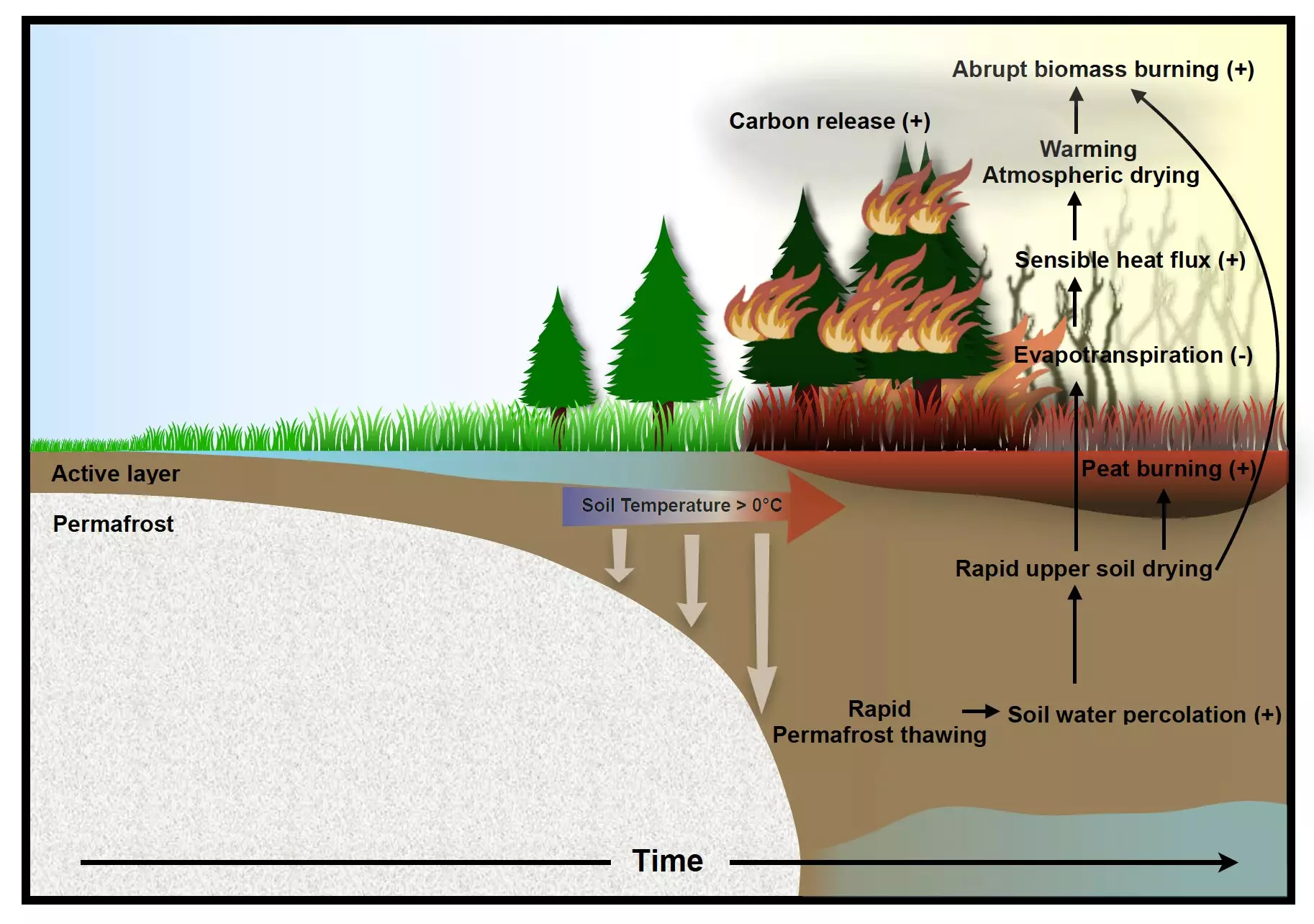The relationship between global warming and ecological changes in polar regions is a pressing concern for climate scientists. A recent study published in *Nature Communications* provides critical insights into how accelerating climate change is poised to magnify wildfire occurrences in the Arctic and Subarctic areas, particularly northern Canada and Siberia. The research, which emerges from an international collaboration among climate experts and permafrost scientists, showcases the importance of integrating various environmental factors into climate models, particularly the interplay between permafrost thawing, soil moisture, and wildfire dynamics.
Significant alarming trends in the Arctic indicate that warmer and drier climates have already led to a surge in wildfires, but how these trends will evolve remains a question. The study’s modeling, based on one of the most extensive Earth system frameworks available, highlights the urgency of understanding this intricate relationship, as the implications for both local ecosystems and global climate systems can be profound.
At the heart of the study is the idea that thawing permafrost plays a pivotal role in influencing soil water content, a crucial element for wildfire ignition and spread. Prior models had inadequately addressed this relationship; however, the new research utilizes the Community Earth System Model to effectively capture the connections between permafrost, soil water content, and fire occurrences. By analyzing extensive datasets from 1850 to 2100 under the Shared Socioeconomic Pathways (SSP3-7.0) emissions scenario, researchers have projected that the rate of permafrost thawing could become alarmingly extensive by the mid-to-late 21st century.
As warming continues, the study posits that the capacity for excess soil water to drain quickly will cause a swift drop in soil moisture levels, triggering surface warming and a shift toward a drier atmosphere. This transition is alarming as it sets the stage for wildfires to escalate. Dr. In-Won Kim, the study’s lead author, emphasizes that the climate models suggest an abrupt transition from minimal fire activity to intense wildfire events in just a few short years—a transformative change with widespread consequences.
Adding another layer of complexity, the research also forecasts an increase in vegetation biomass across high-latitude regions, driven by elevated atmospheric CO2 concentrations—a phenomenon known as the CO2 fertilization effect. While an increase in plant growth might intuitively seem beneficial, this rise in biomass provides additional fuel for wildfires, amplifying the risks and frequency of incidents in already vulnerable ecosystems.
This complex interplay of factors—permafrost thawing, soil moisture fluctuations, and increased biomass—creates a precarious feedback loop that could exacerbate climate change. The release of carbon from wildfires not only contributes to greenhouse gas emissions but also influences atmospheric conditions that further facilitate permafrost thawing.
The study calls for a more nuanced approach to climate modeling, particularly in terms of accurately simulating hydrological processes at a smaller scale. This objective will require augmented datasets to enhance the predictive capabilities of existing Earth system models. Associate Professor Hanna Lee advocates for this improvement, suggesting that a deeper understanding of these localized processes is essential to forecasting the degradation of permafrost landscapes more accurately.
Furthermore, the study acknowledges a significant gap in current climate models: the insufficient integration of fire emissions and atmospheric interactions. Co-author Prof. Axel Timmermann underscores that understanding these interactions is crucial not just for predicting wildfires, but for developing comprehensive strategies to mitigate their impacts on broader climate systems.
As the climate crisis unfolds, revealing interconnected challenges like permafrost thawing and rampant wildfires, the findings from this study present a sobering reminder of the urgent need for effective climate action and research. Prioritizing investments in climate resilience and the development of advanced modeling tools will be essential for understanding and addressing these escalating threats. The delicate balance of Arctic ecosystems hangs in the balance, urging governments, researchers, and communities to act swiftly and cohesively in the face of undeniable climate change.

